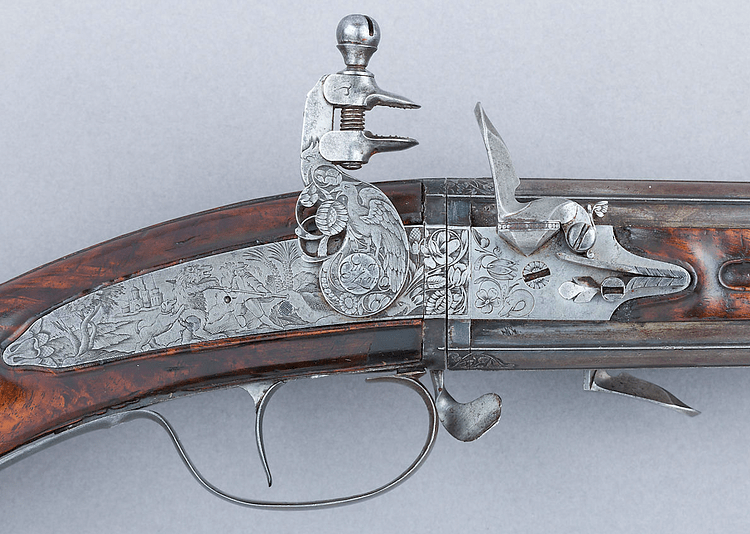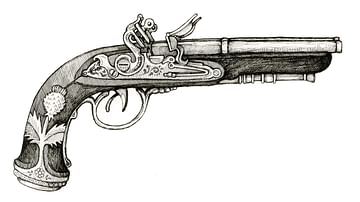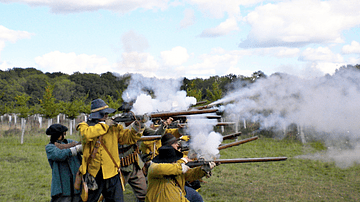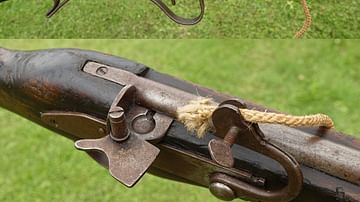Illustration
An example of a 17th-century flintlock firearm mechanism. A piece of flint was held in the vice which the trigger pulled down to strike a metal bar which created a spark to ignite the priming powder which then set off the main charge of gunpowder and fired the bullet. From a c. 1650 pistol made by Claude Cunet of Lyon. (Metropolitan Museum of Art, New York)
Cite This Work
APA Style
Art, M. M. o. (2022, January 14). 17th-Century Flintlock Mechanism. World History Encyclopedia. Retrieved from https://www.worldhistory.org/image/15131/17th-century-flintlock-mechanism/
Chicago Style
Art, Metropolitan Museum of. "17th-Century Flintlock Mechanism." World History Encyclopedia. Last modified January 14, 2022. https://www.worldhistory.org/image/15131/17th-century-flintlock-mechanism/.
MLA Style
Art, Metropolitan Museum of. "17th-Century Flintlock Mechanism." World History Encyclopedia. World History Encyclopedia, 14 Jan 2022, https://www.worldhistory.org/image/15131/17th-century-flintlock-mechanism/. Web. 05 Jul 2025.






